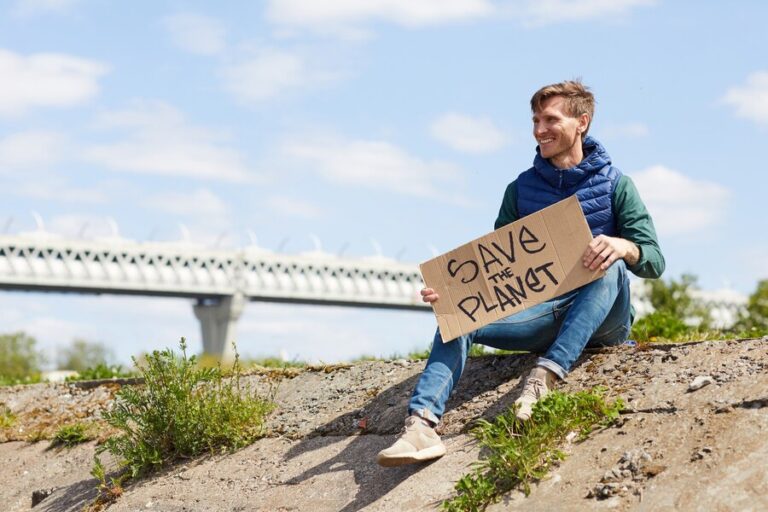Introduction
What does the phrase “The more you take, the more you leave behind” truly mean? It’s a thought-provoking concept that challenges us to consider the impact of our actions, especially regarding our environment. For eco-conscious consumers, sustainable lifestyle enthusiasts, and green technology adopters, this phrase encapsulates the essence of how our choices today determine the planet’s future.
Every product we buy, resource we use, or waste we create leaves behind a legacy—whether it’s contributing to pollution, depleting natural resources, or affecting ecosystems. But there’s hope. Through intentional decision-making, we can reduce what we leave behind, paving the way for a healthier planet. This blog will explore how our daily habits affect the environment, the importance of adopting sustainable practices, and actionable ways to reduce our environmental footprint. Let’s break it down together.
Understanding the Concept
The “Leave No Trace” Principle
At its core, “the more you take, the more you leave behind” aligns with the “Leave No Trace” principle often practiced in outdoor recreation. It emphasizes minimizing human impact on the environment by adopting habits that reduce waste and disturbances. The principle asks us to tread lightly, ensuring that our actions don’t degrade natural ecosystems.
But what if we took this ideology beyond camping trips and hiking trails? Applying the same thinking to our daily lives—home, work, shopping, and travel—can significantly reduce our overall impact on the planet.
How Individual Actions Matter
It’s easy to feel insignificant when faced with global environmental challenges. But make no mistake—individual actions add up. Every plastic water bottle avoided, every piece of second-hand clothing purchased, and every walk taken instead of a car ride contributes to the bigger picture.
Take grocery shopping, for example. Opting for products with minimal packaging or bringing your own reusable bags may seem like small actions. But imagine if millions of people did the same. These habits ripple out, leading to a massive reduction in plastic waste and carbon emissions over time.
Examples of Leaving More
- Overconsumption of Energy: Leaving lights on, running appliances unnecessarily, or having multiple electronic devices charging at once increases energy use. This takes more from the power grid while “leaving behind” higher emissions.
- Frequent Fast Fashion Purchases: Buying cheap, trendy clothing may satisfy a short-term need but often leaves behind piles of textile waste.
- Travel Choices: Opting for frequent flights without offsetting carbon emissions impacts air quality and adds significantly to your environmental footprint.
Environmental Impact of Overconsumption
Our Environmental Footprint Explained
The term “environmental footprint” refers to the collective impact of human activities on the environment, such as energy use, waste production, and resource depletion. Every activity we engage in, from buying groceries to commuting, leaves behind measurable consequences.
For example, consider the production of plastic bottles. Around 300 million tons of plastic are produced every year, yet only less than 10% is recycled globally. The rest ends up littering landscapes, clogging oceans, and harming wildlife—a lasting legacy of human consumption.
How Overconsumption Harms the Planet
- Deforestation: The demand for products like paper, furniture, and even agricultural land has led to the destruction of nearly 18 million acres of forests each year.
- Water Waste: Overusing water directly depletes freshwater reserves, leaving future generations at risk of scarcity. Did you know producing just one pair of jeans consumes approximately 1,800 gallons of water?
- Carbon Footprint: Excessive reliance on fossil fuels for transportation, power, and goods manufacturing produces greenhouse gases. This accelerates climate change, leaving behind a hotter and more volatile planet.
Statistics and Case Studies
- Food Waste: Globally, nearly 30% of all food produced is wasted. That equates to about 1.3 billion tons annually, which decomposes in landfills and contributes to methane emissions.
- Textile Waste: The fashion industry is responsible for 10% of global carbon emissions and contributes to 20% of wastewater pollution worldwide.
Solutions and Sustainable Practices

Small Changes with Big Impacts
Adopting sustainable living doesn’t require drastic sacrifices. Even minor adjustments in everyday life can reduce waste and consumption, leaving less behind for future generations to deal with.
Reduce Waste
- Swap single-use plastics for reusable alternatives like stainless steel straws, glass bottles, and cloth grocery bags.
- Compost food scraps instead of throwing them into the garbage.
Conserve Resources
- Use energy-efficient appliances to reduce electricity usage at home and work.
- Fix dripping faucets to avoid wasting gallons of water daily.
Be a Conscious Consumer
- Buy local! Choosing locally sourced goods reduces transportation emissions.
- Consider second-hand or durable alternatives before purchasing new items.
Green Technologies Shaping the Future
Technology can also help individuals and businesses shift toward sustainable practices. Innovations like solar panels, smart thermostats, and electric vehicles are becoming mainstream tools for reducing environmental impact. Meanwhile, apps that calculate carbon footprints or track spending on eco-friendly products empower users to make better decisions.
Building a Movement Through Community
Join Local and Global Initiatives
Communities play a pivotal role in amplifying individual efforts. Large-scale changes often start small, with passionate people working together toward common goals. Examples include beach-cleanup days, urban garden collectives, and advocacy groups promoting zero-waste lifestyles.
Organizations Driving Change
- The Zero Waste International Alliance: A global network advocating waste-free communities.
- Carbonfund.org: Offers resources for individuals and businesses to offset their emissions.
- Plastic Pollution Coalition: Focuses on eliminating single-use plastics.
Case Studies of Collective Action
- Plastic-Free July Challenge encourages millions worldwide to eliminate single-use plastics for a month. Over 326 million participants across 177 countries have taken part.
- The Ocean Cleanup Project has removed hundreds of tons of garbage from waterways globally.
Choose Sustainability Today
We all share this planet, and every choice we make leaves a mark. Whether it’s reducing waste, buying responsibly, or supporting community initiatives, small changes as individuals have the power to create substantial collective impact.
Take the phrase “The more you take, the more you leave behind” as a rallying call to action. Living sustainably shows love for the earth and respect for the generations yet to come. And remember, the path to sustainable living doesn’t have to be overwhelming—start small and build from there one step at a time.
Are you ready to make a difference? Join a community initiative, learn more about green technologies, or start your sustainable living plan today. Together, we can leave behind footprints that matter.
